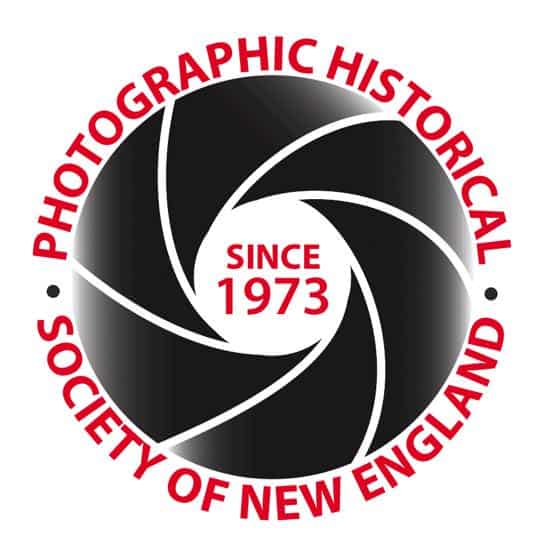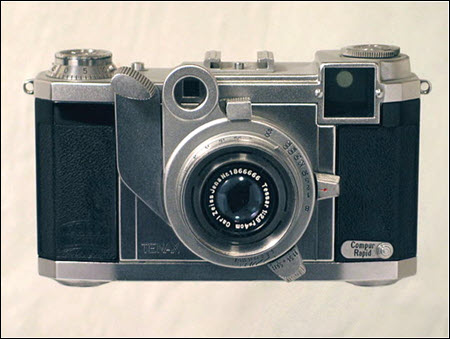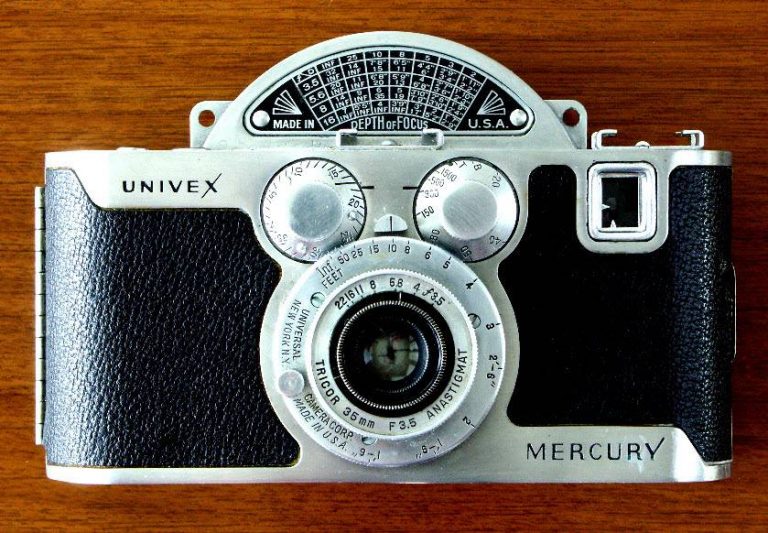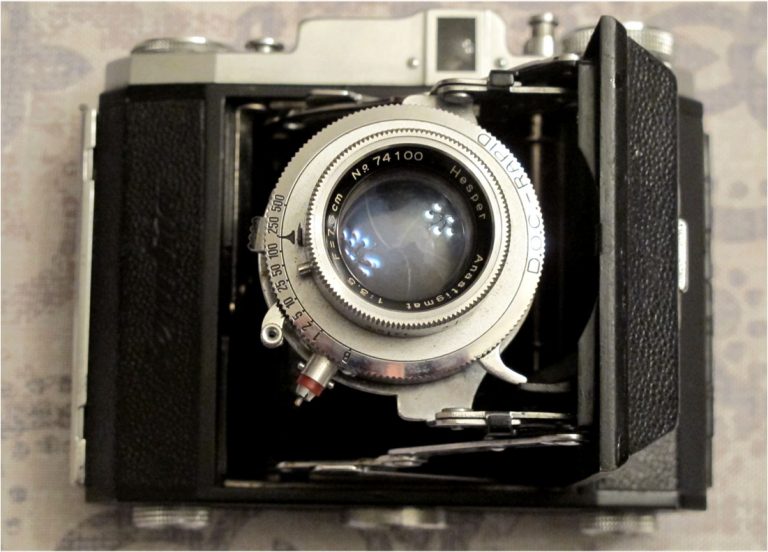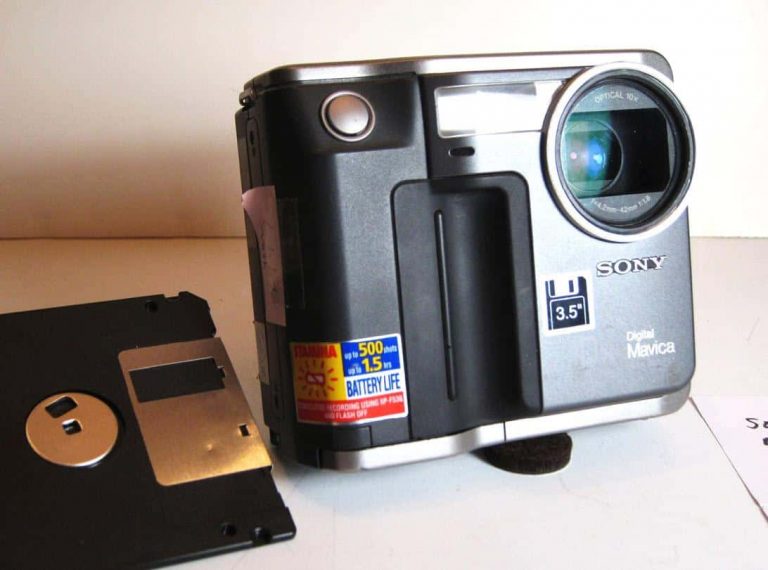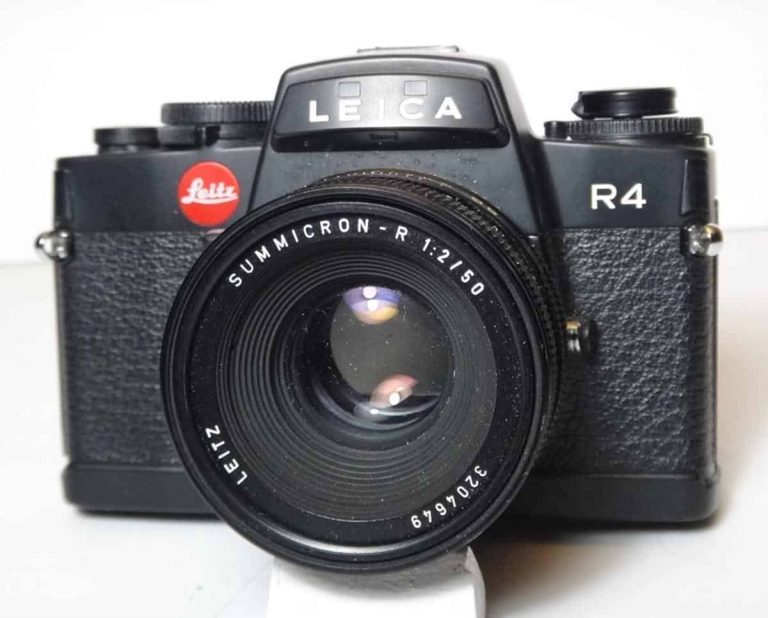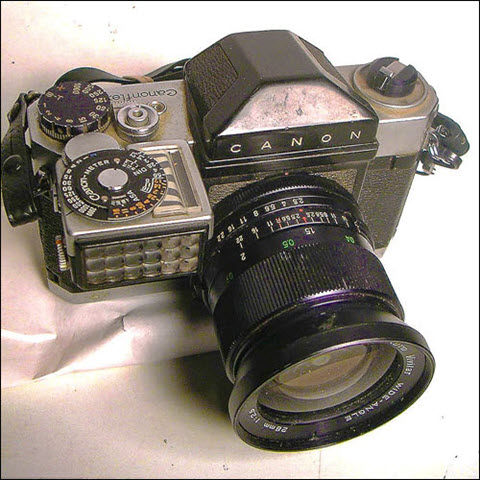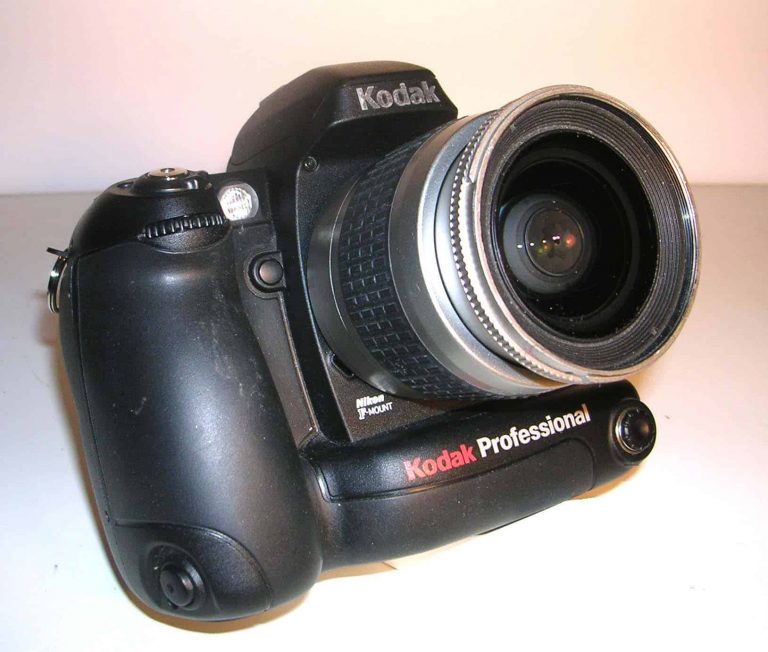The Tenax name dates back to 1907. It appeared on folding plate cameras manufactured by the C. P. Goerz company in Berlin. It’s easy to be confused by the chronology of the Tenax cameras since “the advanced 1938 model is known as mark II, or just Tenax II, while the simpler [but later] 1939 model is known as Tenax I” (http://camera-wiki.org/wiki/Tenax_II).
The history of the Tenax name and production is complicated due to trademark disputes, company mergers, and timing (WW II). While many lenses could be used with the Tenax II, its standard lens was a 40mm 1:2.8 with a Compur Rapid OS leaf shutter ranging from 1-1/400 sec and B. The 24x24mm square format accommodated 48 images on regular 35mm film that ordinarily held 36 frames. The entire system is similar to that on the Super Ikonta, the Super Nettel and the Nettax, and it shows to what extremes [Zeiss] went to evade the Leica patents.
The coupled rangefinder image is visible in the viewfinder, which employs two counter-rotating wedge-shaped prisms, placed in front of the rangefinder window. They are an integral part of the interchangeable lens, and therefore directly geared to the focusing mechanism in the lens barrel. Production of the Tenax II lasted from 1937 or 1938 to 1941, ending during WW II. Various models of the Tenax I were produced by Zeiss Ikon and later in East Germany into the 1950s.
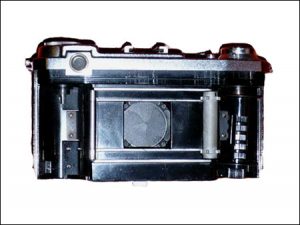
Depending on your point of view, the Tenax II was a “belated answer to the Robot spring camera” (Classic Camera, August 1997), “NOT Zeiss’ answer to the Robot cameras of 1934” (Wes Loder blog) or “certainly inspired by the Robot camera” (Camera-wiki Tenax II).
The Robot was manufactured by Otto Berning; information about it can be found at https://en.wikipedia.org/wiki/Robot_(camera). The Robot line had a longer production run and was more commercially successful. “The Zeiss-Ikon Tenax [II] of 1936-1941 was to be the director of camera design Hubert Nerwin’s masterpiece, combining high quality, precision and finish in a fast-operating and easily-handled, compact 35mm camera. Its images are in the rare 24mm X 24mm format” (https://tinyurl.com/3hyua5ud).
The camera is designed for speed, and camera-wiki notes that “both winding and focusing the camera, as well as setting the exposure, is exemplary quick and easy. The shutter-release is just next to the top of the wind-lever in its rest position, enabling fast switching the finger back and forth.”
The first appearance of the Tenax II was at the Leipzig fair in 1938. Marketing was directed towards wealthy clients, particularly women photographing family activities. The cost of the camera was just over $200, a significant sum at the time it was introduced and, according to an inflation calculator, equal to just under $4,000 today. Professional photographers were more likely to use Leica or Contax cameras which had accessories that made them more versatile. An estimate of the number sold during the limited run of the Tenax II is under 9,000. Zeiss Ikon imprinted “official” model numbers on its cameras; McKeowan’s lists the Tenax II as 580/27.
There is some confusion over the specific dates of manufacture. Most sources indicate a three-year run from 1938—1940, but manufacturing began in 1937 and at least one source indicates that about 2000 were sold in 1937.
N.B. Zeiss camera designer Hubert Nerwin created the Contax II and III, the twin-lens Contaflex and Ikoflex, as well as the Texax II and other cameras. After WW II Nerwin came to the US to work at Graflex, creating the 70mm motorized Combat Graphic rangefinder camera, which looked like a Contax II on steroids. He later went to work at Kodak and developed the Instamatic camera and the 126 film cartridge with its 28mm x 28mm square frame size.
What the heck…
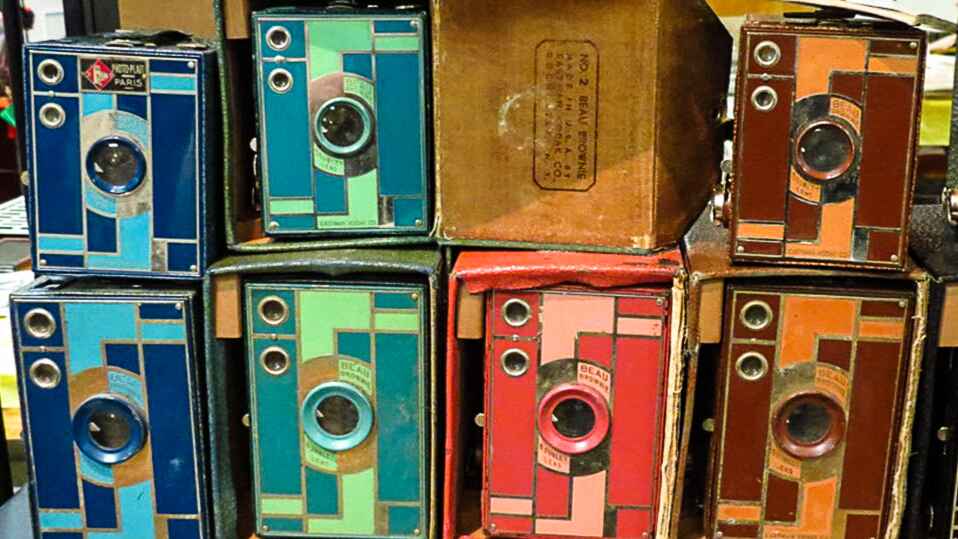
Are Those Even Cameras?!
Join the PHSNE Newsletter and learn more about photographic history and preservation. Already an expert? Come and share your collections and knowledge as we celebrate the history and advancement of photography.
